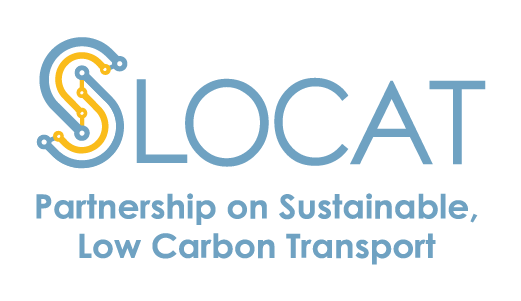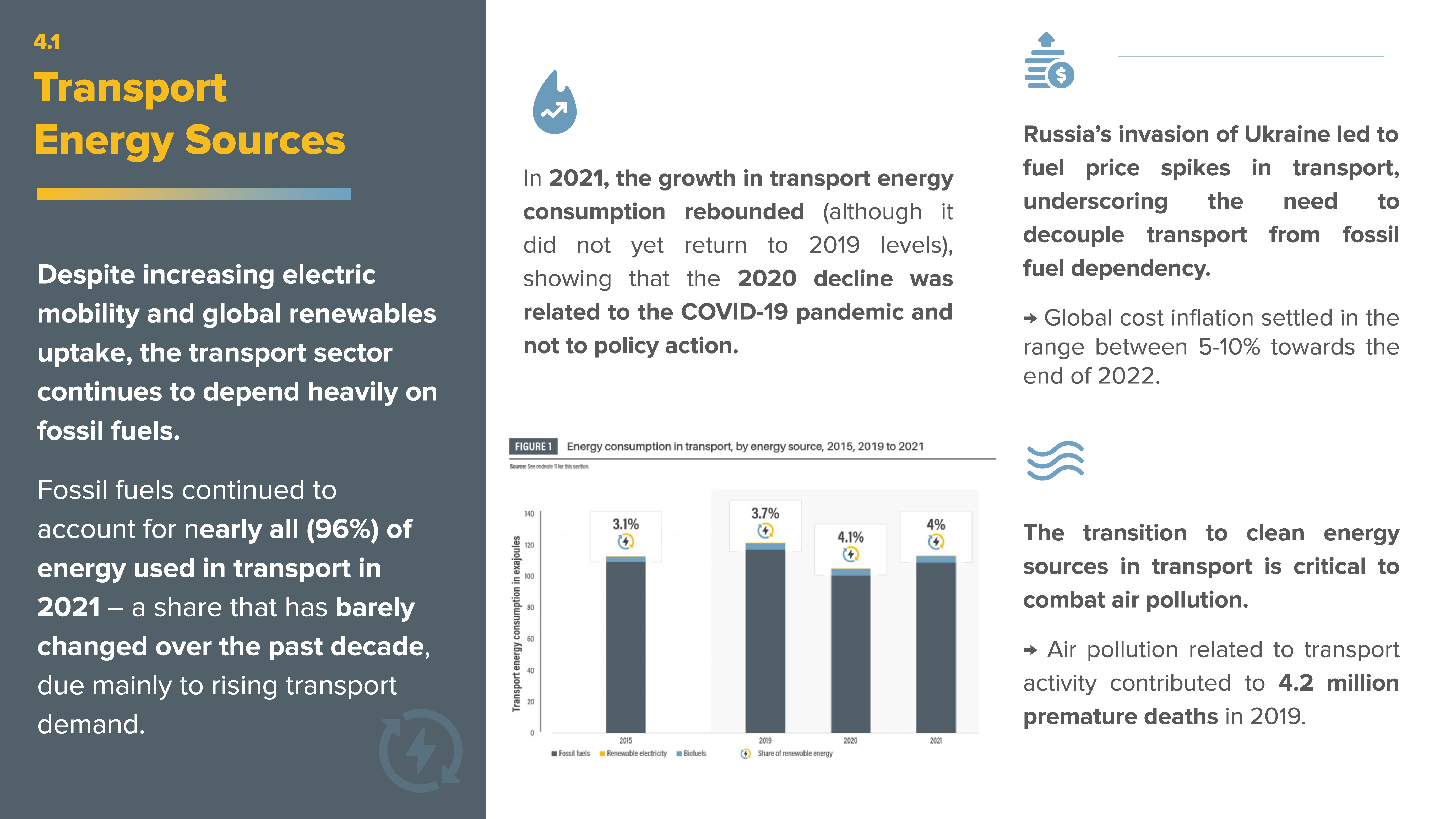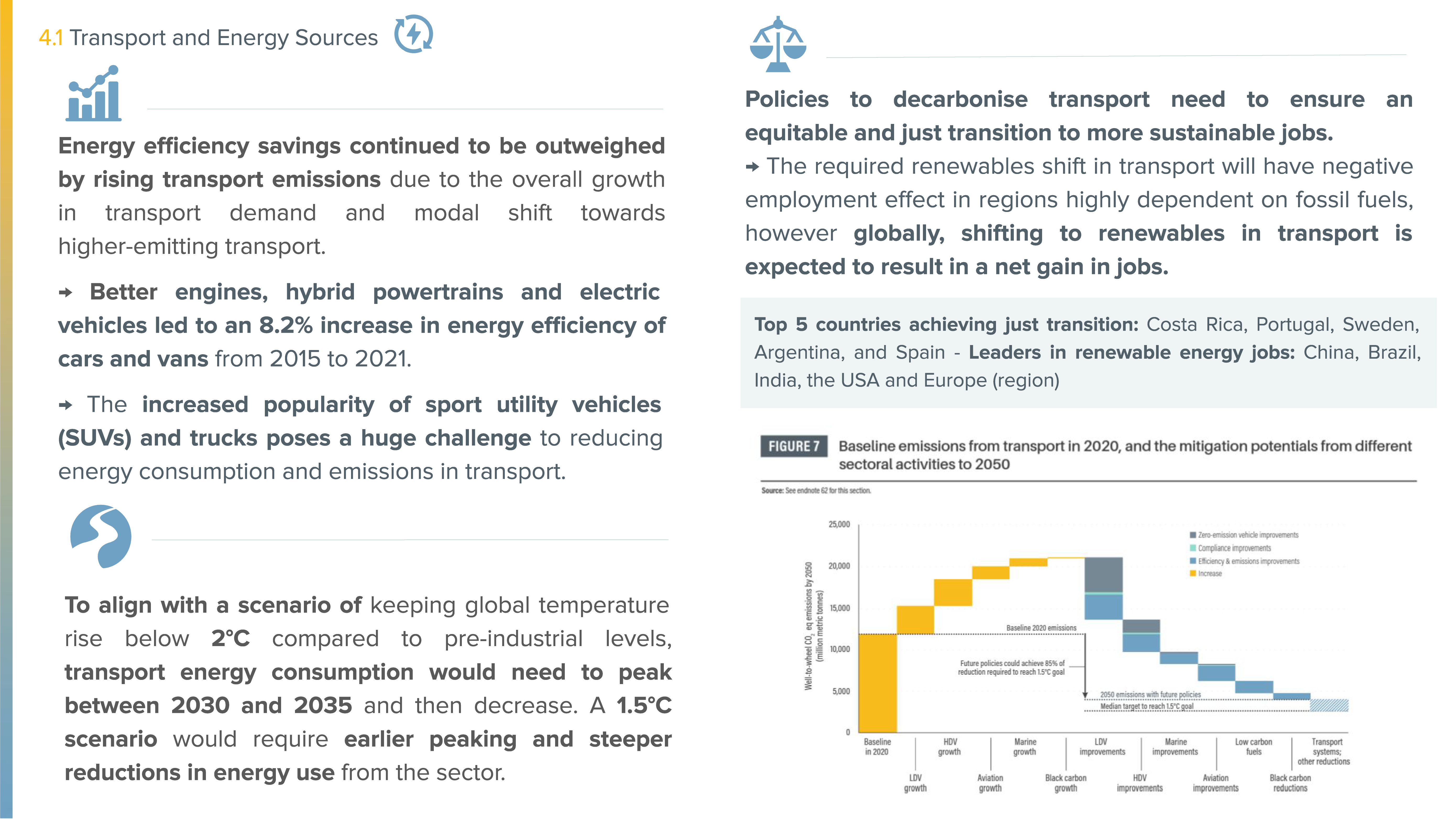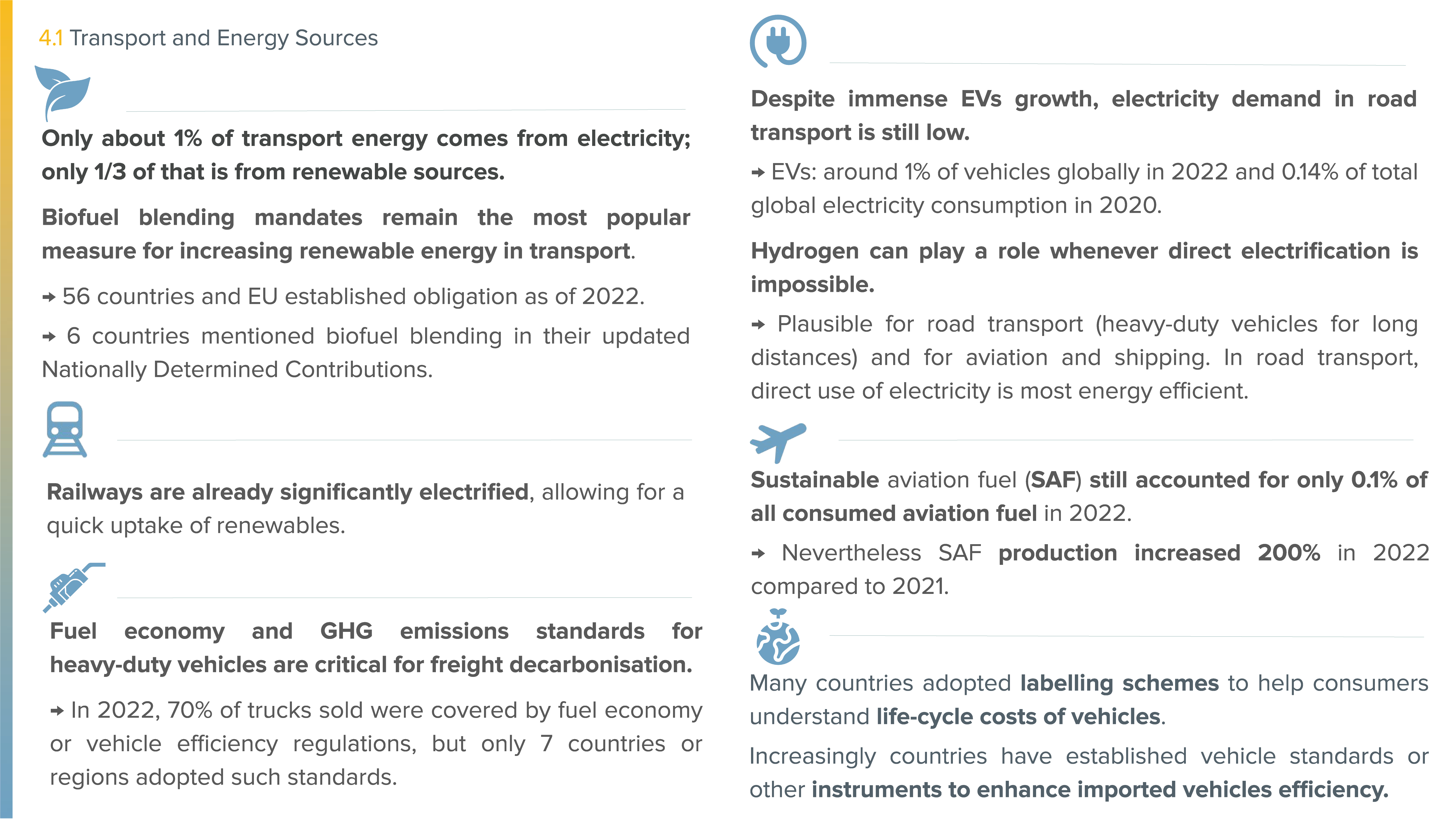-
Transport Energy Sources
- Key Findings
Demand trends
- An analysis of 810 scenarios developed by the Intergovernmental Panel on Climate Change concluded that to limit global warming even to 2 degrees Celsius (°C), transport energy consumption would need to peak between 2030 and 2035 and then decrease. Scenarios compatible with a 1.5°C scenario would require earlier peaking and steeper reductions in energy use from the sector.
- In 2021, the growth in transport energy consumption rebounded somewhat (although it did not yet return to 2019 levels), indicating that the decline in 2020 was related to the COVID-19 pandemic and not to policy action in the sector.
- The Russian Federation’s invasion of Ukraine in February 2022 led to fuel price spikes in the transport sector, underscoring the need to decouple transport from fossil fuel dependency. Towards the end of 2022, global cost inflation settled in the range of 5-10%.
- Improvements in engine technologies, the introduction of hybrid powertrains, and greater use of electric vehicles led to an 8.2% increase in the energy efficiency of cars and vans between 2015 and 2021. However, the increased popularity of sport utility vehicles (SUVs) and trucks poses a huge challenge to reducing energy consumption and emissions in the sector.
- In road transport, direct use of electricity is most efficient from an energy perspective, where this is technically and logistically feasible.
- The share of diesel among all oil products used in road transport increased from 39.1% to 45.5% between 2000 and 2020. This trend is driven largely by rising demand for freight transport, which is mostly diesel-powered.
- Biofuels are the largest renewable energy source in transport, accounting for 3.7% of the sector’s energy consumption in 2021, up 0.8 percentage points since 2015. The main policies supporting biofuels are blending mandates set by countries.
- Hydrogen can play a role whenever direct electrification is impossible. Hydrogen is considered plausible for road transport (for use in heavy-duty vehicles for long distances) and for aviation and shipping.
- Despite the immense growth in electric vehicles over the last decade, electricity demand in road transport is still low, with electric vehicles accounting for around 1% of vehicles globally in 2022. Electric vehicles represented only 0.14% of total global electricity consumption in 2020.
- Electrification is most prominent in rail transport, accounting for 45% of the energy consumed by rail in 2021.
- Fossil fuels continue to account for the majority of electricity generation in the power sector, and thus for the majority of the electricity supplied for electric vehicles.
- More than 450,000 commercial flights used sustainable aviation fuel (SAF) in 2022, with SAF production increasing 200% compared to 2021. However, SAF still accounted for only 0.1% of all consumed aviation fuel as of 2022.
Emission trends
- Carbon dioxide (CO2) emissions from road transport increased steadily between 2000 and 2020.
- Energy efficiency improvements and the use of renewable energy sources, mostly biofuels, helped reduce emissions from the transport sector. However, these savings continued to be outweighed by rising emissions from the overall growth in transport demand and from the modal shift towards higher-emitting forms of transport, leading to a net increase in emissions from the sector.
- The required shift to renewable energy in transport will have negative effects on employment in regions that are highly dependent on fossil fuels. Policies aimed at fostering the decarbonisation of transport will need to ensure an equitable and just transition towards more sustainable jobs. Globally, this shift is expected to result in a net gain in jobs.
- An “ambitious yet feasible” scenario from the International Council on Clean Transportation (ICCT) projects that the energy efficiency of light-duty vehicles will improve 0.75% annually between 2030 and 2050. Energy efficiency plays a major role in decarbonising the maritime and aviation sectors under this scenario.
Policy developments
- Mandatory standards for energy efficiency and for greenhouse gas emissions have proven to be effective instruments to drive efficiency and the shift to zero-emission vehicles.
- An increasing number of countries – mostly with limited or no domestic vehicle manufacturing – have established vehicle standards or other instruments to enhance the efficiency of imported vehicles.
- Fuel economy and greenhouse gas emission standards for heavy-duty vehicles are an important instrument to decarbonise the freight sector. In 2022, more than 70% of trucks sold were covered by fuel economy or vehicle efficiency regulations, although only seven countries or regions had such standards.
- Many countries have adopted vehicle labelling schemes to help consumers make informed choices by better understanding the life-cycle costs of vehicles.
- Biofuel blending mandates remain the most popular measure for increasing renewable energy in transport, with at least 56 countries and the EU having established some form of obligation by the end of 2022.
- As of the end of 2022, at least six countries mentioned biofuel blending in their updated Nationally Determined Contributions (NDCs) towards reducing emissions under the Paris Agreement, with policy implementation yet to come.
- In aviation, some countries are considering biofuel blending mandates for sustainable aviation fuel.
Author: Marion Vieweg, Current Future
Contributor: Hannah E. Murdock, Imperial College London




